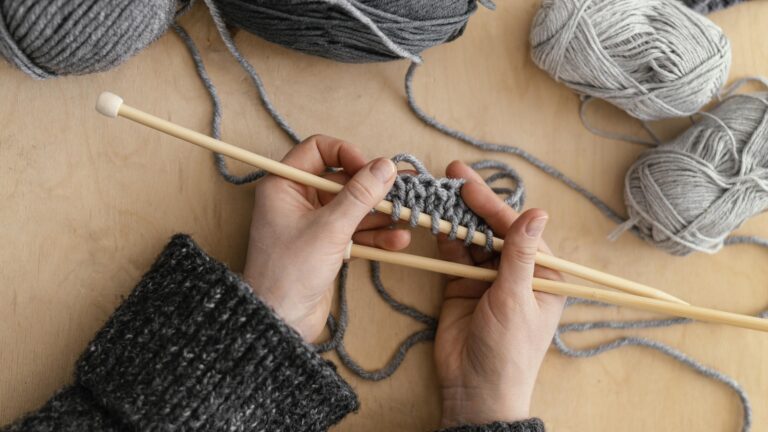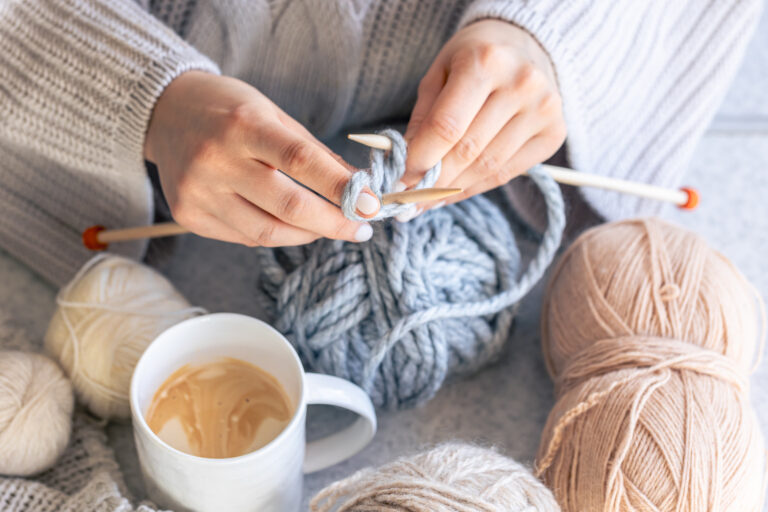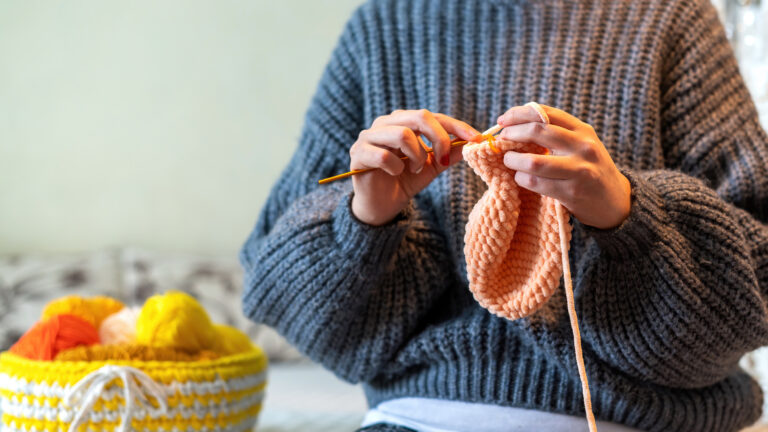How Long Does It Take to Knit a Scarf? Time Guide
Knitting a scarf is a rewarding and accessible fiber arts project, perfect for beginners to learn hand-knitting and finishing techniques. While often considered a simple task, the time required varies based on stitch complexity, yarn weight, needle size, lighting, and the knitter’s pace.
Scarves aren’t just for warmth; they display colors, patterns, and personal style. A basic garter-stitch scarf in wool might take an afternoon, while a lace scarf in fingering yarn could take weeks. On average, expect six to twenty-five hours. This overview helps knitters set realistic goals and plan effectively.
Also Read: How to Read Knitting Patterns?
Factors That Affect Knitting Time
A wide range of variables interacts to shape the total time needed for knitting even a simple scarf. From the materials selected to the knitter’s experience and rhythm, every component counts.
Yarn Type and Thickness

Yarn’s thickness and texture have an immediate and noticeable effect on knitting speed. Bulky or super-bulky strands build heftier stitches, which translates to fewer stitches in each row and fewer rows overall for any given length.
By contrast, fingering or lace-weight yarn demands many tiny loops to cover the same surface, automatically doubling or tripling the time spent on that section. As a rule, a soft chunky scarf can be finished in an evening, whereas a gauzy lace scarf of the exact measurements might take several weeks of careful, repeated work.
Needle Size
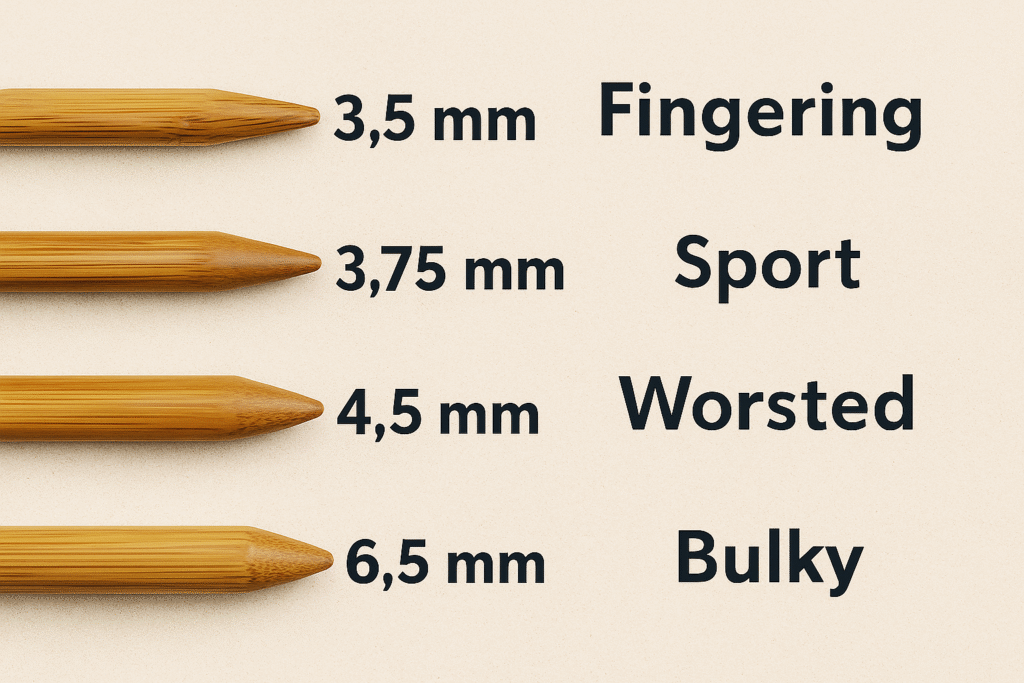
Knitting needle size is directly tied to yarn thickness. Big needles are ideal for chunky yarn, allowing for quick and large stitches that significantly speed up the entire process. Tiny needles, meanwhile, are a must for fine strands, forcing the knitter to make many small stitches and spend much longer finishing the same piece. To knit efficiently and achieve the right drape in the finished fabric, the yarn and needle must work together in a careful balance.
Pattern Complexity
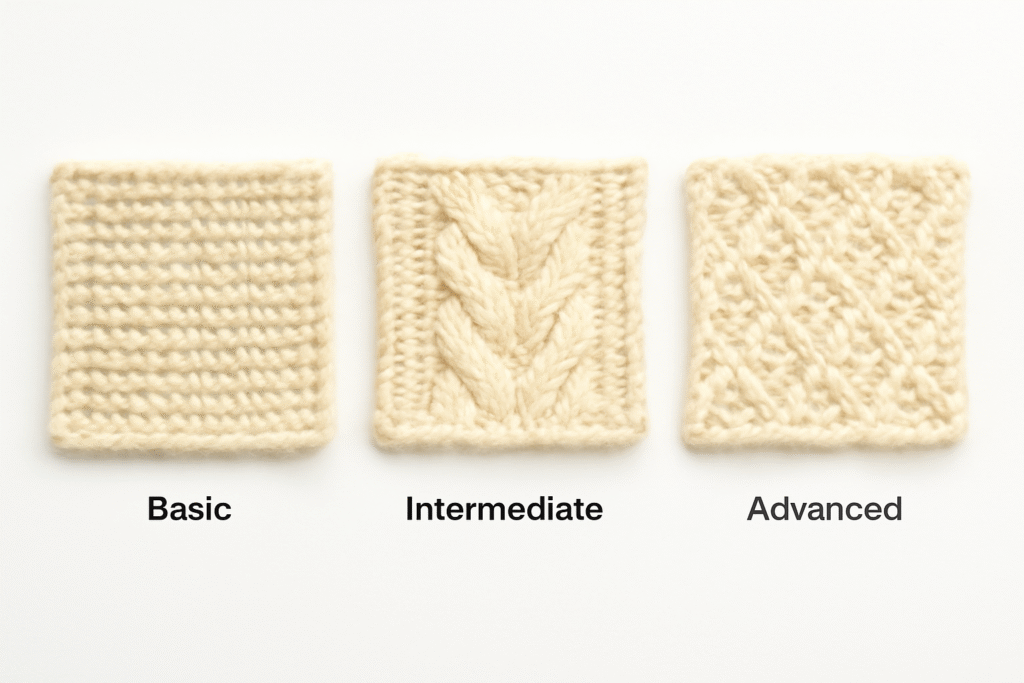
The complexity of the pattern also determines the duration of a project. A plain garter-stitch or stockinette pattern repeats the same move over and over, which can cause it to fly off the needles. In contrast, designs that incorporate cables, lace, or work with multiple colors require steady focus, additional skills, and often a slow count. Due to these learning curves, such patterns stretch the clock and make the final knit feel heavier over time. New knitters usually begin with simple stitches for this reason, easing into the craft one repeat at a time.
Knitting Experience Level
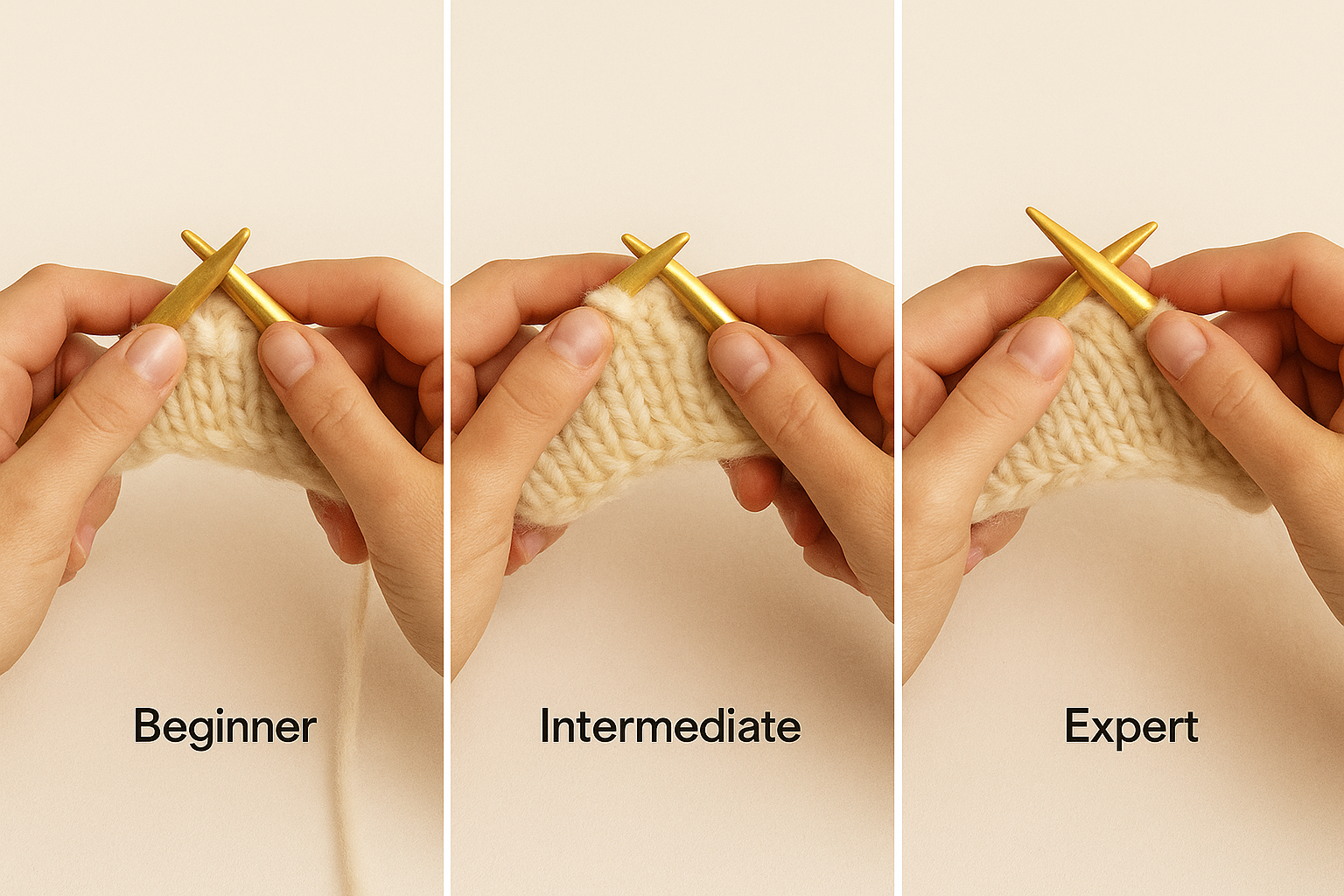
A knitter’s experience level affects their speed and overall efficiency in the most obvious, practical ways. Seasoned crafters, whose fingers have memorised every motion, work through rows with surprising rapidity and even calm. Because they have met common disasters ten times already, they spot and fix mistakes in seconds, protecting the clock. In contrast, a true novice still wrestling with tension, dropped stitches, and awkward hand cramping will naturally progress much more slowly.
Those first lessons in casting on and counting rows demand patience, and time spent untangling yarn only makes the totals longer. Ultimately, gaining speed is a gradual journey accomplished through repetition, experimentation, and quiet familiarity with many small techniques.
How Long Does It Take to Knit a Scarf?
Pinning down an exact number of hours needed to knit a simple scarf is more complicated than it sounds—the craft is generous with variables. Still, rough guidelines can be offered based on typical projects and the experience of many household knitters.
For Beginners (15-25 hours)
New knitters attempting their very first scarf usually invest somewhere between fifteen and twenty-five hours on the project. That time encompasses learning the foundational stitches, maintaining steady yarn, and correcting minor errors as they occur. Many beginners opt for an easy garter-stitch design, working with medium or bulky yarn and matching, forgiving needles so that they can see each loop.
The early minutes are spent more on handling the needles than on speeding along, since getting comfortable is the real goal before stitching quickly. That time budget also leaves room for breaks, chatting with friends, or simply pausing to enjoy the rhythm of the craft.
For Intermediate and Experienced Knitters (6-12 hours)
Moderately skilled knitters can noticeably speed up the process of creating a typical scarf. An intermediate crafter working with a beginner-friendly stitch in worsted or bulky yarn typically spends 8 to 12 hours on the piece. A confident knitter, especially one using thick yarn and big needles, may finish the same design in just 6 hours or even less. Their quick pace comes from practiced hand movements, a natural feel for ply tension, and the ability to watch television or chat while stitches form.
Examples from Real Knitters and Experiments
Stories circulating in online forums and local groups tend to back up those figures. Many crafters report a personal best, finishing a simple garter stitch scarf in one focused weekend and logging somewhere between ten and fifteen hours. Beginners, in contrast, often say their first attempt took several weeks, as they squeezed in only a few hours each evening after class or work.
Online knitting forums and social media communities regularly share firsthand stories that reveal how much time a project consumes, demonstrating how the same pattern can take very different people widely varying amounts of time. Hobbyists often run their tests, casting on identical pieces with heavier or lighter yarn and swapping needle sizes, and their reports clearly show that these small changes can speed up or slow down the work by hours or days.
New knitters looking to produce their very first scarf usually hear reassuring accounts of early frustrations giving way to steady rhythm, and these anecdotes often finish with a finished piece much sooner than the novice feared.
Also Read: How to Join in Round in Knitting?
How to Calculate Your Knitting Time
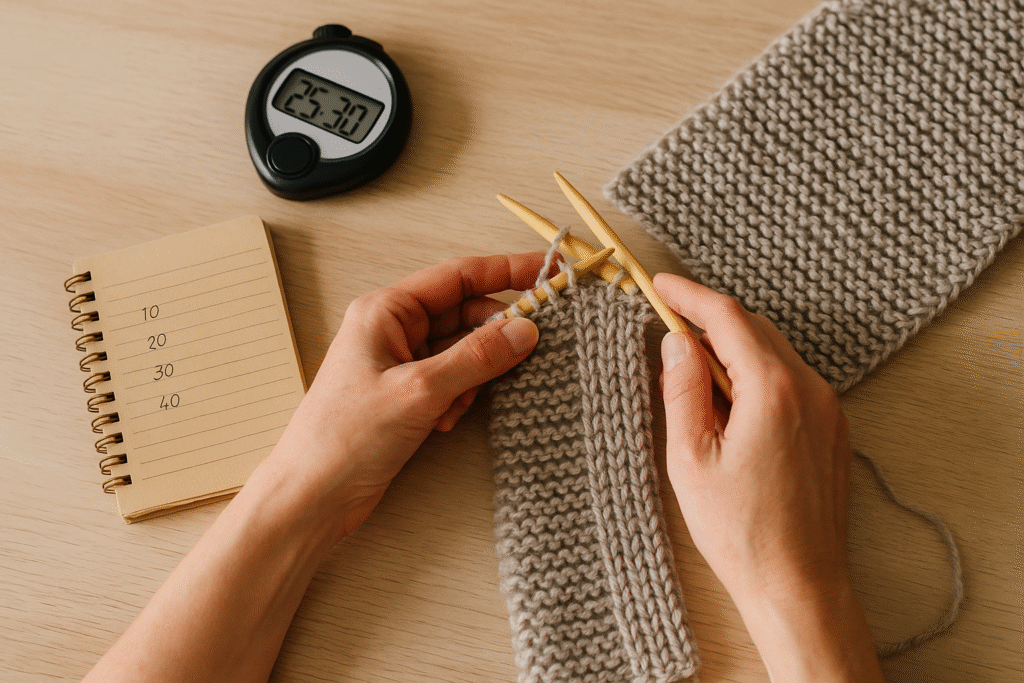
Measuring Your Knitting Speed (Stitches Per Minute)
Determining a knitter’s speed is the initial step in estimating how long a project will take. It can be done by choosing an easy pattern and knitting continuously for five to ten minutes. Count the number of stitches completed during that period and calculate the speed by dividing the count by the corresponding time in minutes.
For example, if 50 stitches were completed in 5 minutes, that amounts to a rate of 10 stitches per minute. The speed measured is based on the assumption that the same stitch, yarn, and needle size will be used throughout the measurement period.
Estimating Total Stitches Based on Scarf Dimensions
The measurements for length and width should be decided before calculating the total stitches for the scarf. After settling on them, make a gauge swatch with the chosen yarn and needles. The swatch is generally a small square sample that demonstrates how many stitches and rows fit into an inch or centimeter.
With that information, estimating the total stitches for each row becomes relatively simple. Multiply the planned width of the scarf by the number of stitches learned from the gauge.
To get the total number of rows, multiply the planned length of the scarf by the row count per inch from the gauge swatch. Then, calculate the overall stitch count by multiplying the stitches per row by the total number of rows.
These metrics alone provide an obvious picture of the amount of knitting the project will require. This, along with the fact that for beginners, it serves as concrete proof that well-thought-out planning minimizes surprises at the end.
Tips to Knit a Scarf Faster
Time-saving does not require sacrificing quality. Specific adjustments can accelerate the knitting process while maintaining durability and aesthetics.
Use Chunky Yarn and Larger Needles
Pairing chunky yarn with oversized needles is still one of the quickest ways to speed up a project. Because the yarn is thicker, knitters work with fewer stitches, and the bigger needles let each loop slide off the tip almost effortlessly.
A straightforward scarf made from super-bulky yarn and 10-mm or larger needles can be finished in a few evenings, far faster than a delicate lace piece. For anyone seeking instant satisfaction—whether as a last-minute gift or a weekend binge—the hulking materials do most of the work.
Choose Simple Patterns
Once the yarn and needles are settled, sticking to a straightforward stitch pattern will help maintain momentum. Options like garter stitch, stockinette, or basic ribbing repeat in the same way row after row, so that the hands can fall into an easy rhythm. Because these designs omit cable needles, multiple color changes, or constant glances at a chart, the knitter spends less time stopping to think.
More elaborate motifs are indeed lovely, yet their twists, turns, and mini calculations naturally slow progress. When the primary goal is speed, basic simplicity usually wins the race.
Knit Consistently and Avoid Long Breaks
Working on a project in steady, brief sessions drives progress more than saving time for long marathons every few weeks. When a knitter picks up the needles every day, even for only twenty minutes, they steer clear of that awkward cold start where fingers forget the rhythm of a pattern.
Keeping those small times close together also means never losing the working tension of the yarn, which in turn maintains a high speed. Repeating the motion day after day turns separate stitches into fluid muscle memory, so the same number of rows takes less effort over time. A simple nightly habit, whether scarf-length or shorter, reduces the total hours needed to complete an accessory.
Knitting Scarf FAQs
Final Thoughts
The time it takes to finish a scarf depends on the yarn, needles, stitch choice, and each knitter’s skill. Estimates range from six to twenty-five hours, with novices requiring extra practice and more experienced makers completing tasks much faster. The slow satisfaction of pulling one loop after another until a piece takes shape, start to finish, under the maker’s fingertips.
Regardless of timing, the true goal is to have fun while watching the fabric grow. So, pick up the needles, wrap the yarn around the fingers, and allow the quiet journey to be rewarded as richly as the finished piece ever could.
Also Read: How to Add Stitches When Knitting?



